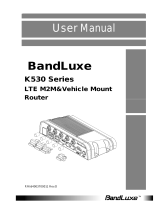
5
7.6.7 Port Scan Prevention ....................................................................................................................... 78
7.7 Routing ..................................................................................................................................................... 79
7.7.1 Static Routes .................................................................................................................................... 79
7.7.2 Dynamic Routes ............................................................................................................................... 80
7.8 Load Balancing ......................................................................................................................................... 83
8 Services ........................................................................................................................................................ 84
8.1 VRRP ......................................................................................................................................................... 84
8.1.1 VRRP LAN Configuration Settings .................................................................................................... 84
8.1.2 Check Internet connection ............................................................................................................... 84
8.2 TR-069 ...................................................................................................................................................... 85
8.2.1 TR-069 Parameters Configuration ................................................................................................... 85
8.3 Web filter ................................................................................................................................................. 85
8.3.1 Site blocking ..................................................................................................................................... 85
8.3.2 Proxy Based Content Blocker ........................................................................................................... 86
8.4 NTP ........................................................................................................................................................... 87
8.5 VPN .......................................................................................................................................................... 88
8.5.1 OpenVPN .......................................................................................................................................... 88
8.5.2 IPSec ................................................................................................................................................. 90
8.5.3 GRE Tunnel ....................................................................................................................................... 93
8.5.4 PPTP ................................................................................................................................................. 95
8.5.5 L2TP .................................................................................................................................................. 96
8.6 Dynamic DNS ............................................................................................................................................ 97
8.7 SMS Utilities ............................................................................................................................................. 98
8.7.1 SMS Utilities ..................................................................................................................................... 98
8.7.2 Call Utilities .................................................................................................................................... 104
8.7.3 User Groups ................................................................................................................................... 105
8.7.4 SMS Management .......................................................................................................................... 106
8.7.5 Remote Configuration .................................................................................................................... 107
8.7.6 Statistics ......................................................................................................................................... 110
8.8 SNMP ..................................................................................................................................................... 110
8.8.1 SNMP Settings ................................................................................................................................ 111
8.8.2 TRAP Settings ................................................................................................................................. 112
8.9 SMS Gateway ......................................................................................................................................... 112
8.9.1 Post/Get Configuration .................................................................................................................. 112
8.9.2 Email to SMS .................................................................................................................................. 115




















